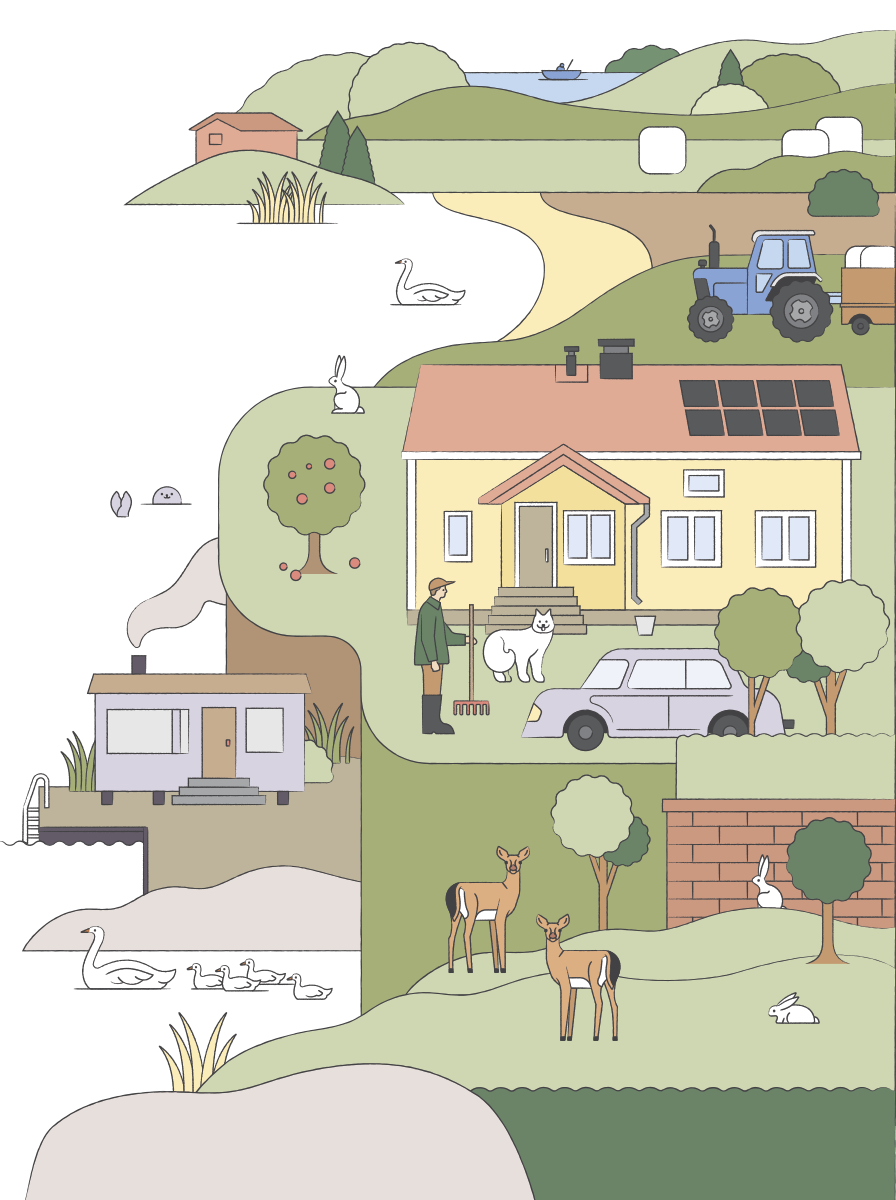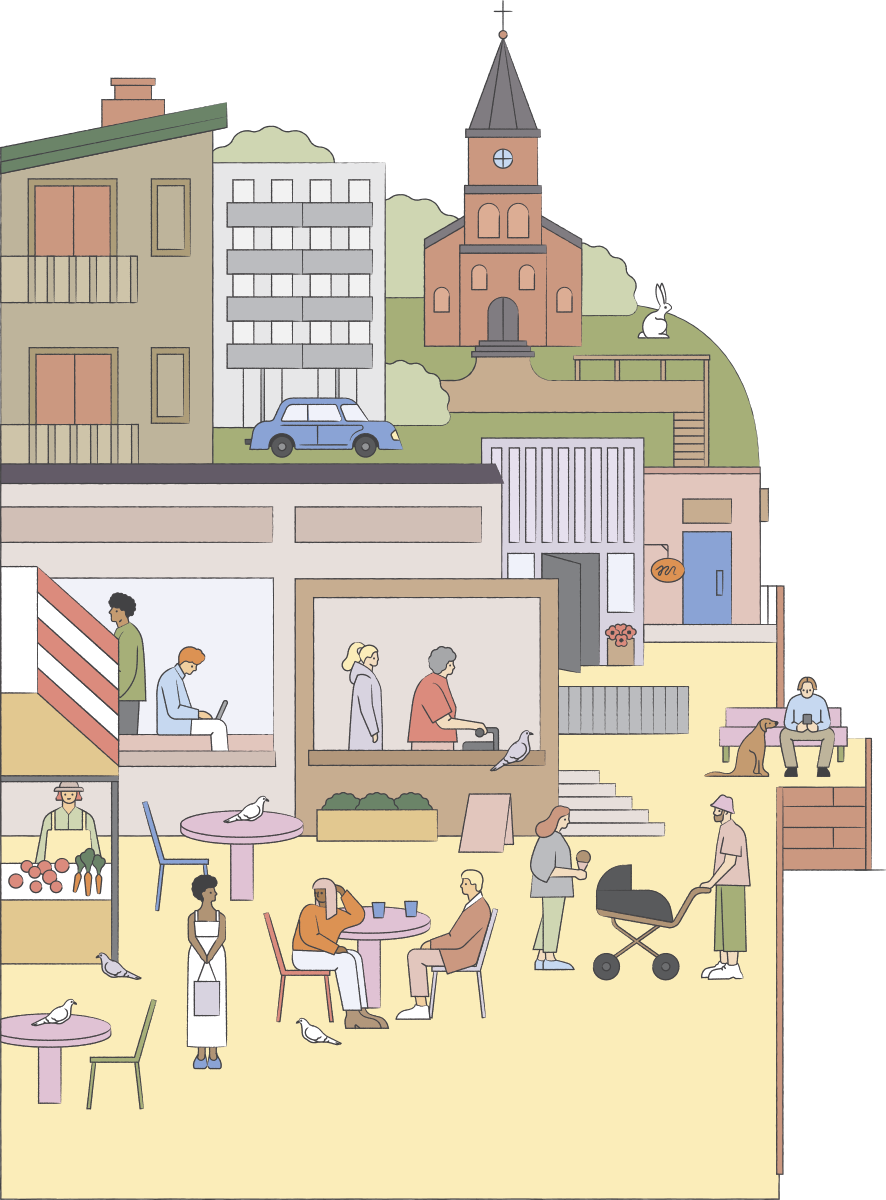Climate change makes it more important than ever to manage rain and storm water on the plot: excessive rains will increase the amount of water but the capacity of the drainage system will stay the same. Excessive water from rain and melting snow fall needs to be lead away from the surface of the ground and the roofs of the buildings.
The idea of natural rain and melt water management is simple: to slow down the flow and let water absorb into the ground. Green roofs help prevent water rushing down from the roof, and open drains, rainwater pools, and rain gardens lead temporary floods safely to their desired destinations. Porous pavements and surface materials let water absorb into the ground.
Water is filtered and cleaned when it slowly absorbs and falls through the layers of soil. The water that goes through the sewer system is often lead to water bodies without cleaning, which has worsened the condition of small water bodies in particular. Surface materials that do not let water through increase the risk of urban flooding.
The local management of excessive water, including rain gardens, will increase biodiversity in an urban environment, and ponds and fountains help balance the difference between temperature and humidity.
Use your yard or contact the housing company (rental apartments and home ownership) to propose natural rain water control in connection with yard renovation, for example.
- Keep the green area as large as possible and use water-absorbing materials on pathways, such as rock dust, pavement or tiling. Avoid surfaces that do not absorb water, such as asphalt.
- Choose layered growth (trees, bushes and non-woody plants). Plants absorb rain water and reduce the impact of extreme weather conditions.
- Build green roofs and rain gardens to slow down rain water.
- Collect rain water into containers to use during dry seasons.
- Organize a place for plowed snow to melt to avoid transport.
- For a more detailed rainwater plan, contact a landscaping professional.




